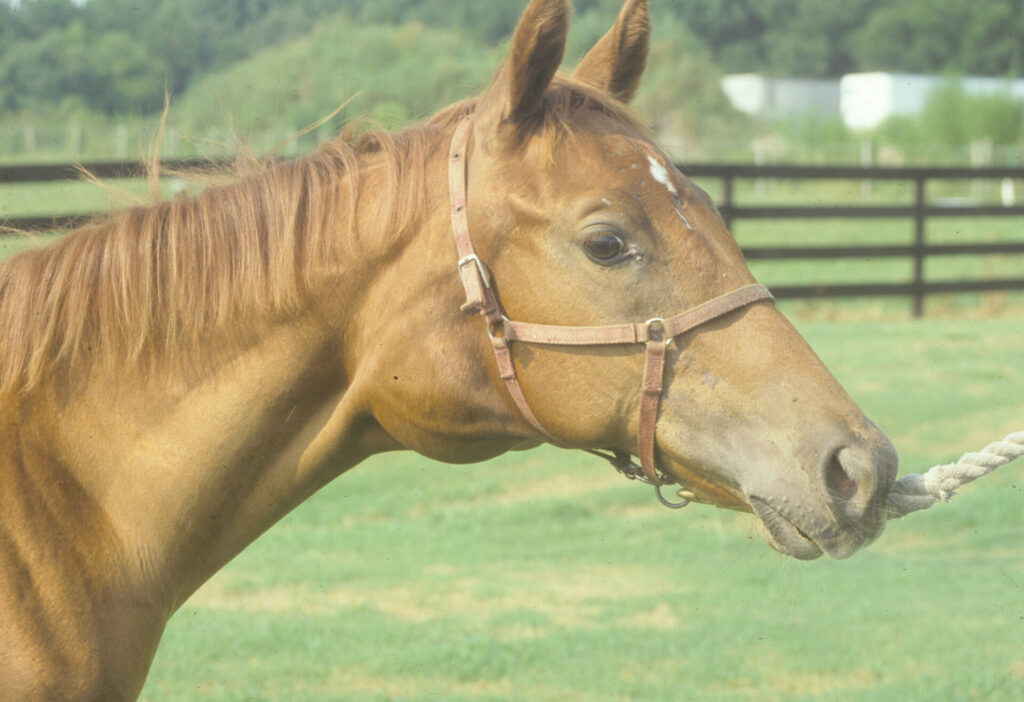Guttural pouch tympany is a rare condition, but occurs more common in filly foals. The condition is usually apparent soon after birth, but in some horses the signs may not be evident for up to 1 year of age. Most affected foals have a single pouch affected.
The cause of guttural pouch tympany is not known. It is assumed that the fold of mucosa on the medial lamina of the eustachian tube cartilage is redundant, and lets air in the pouch but won’t let it escape. The pouches open when the horse swallows.
The guttural pouch or pouches becomes distended with air and a non-painful swelling develops in the parotid/throat latch region. There may stertorous breathing as the tympanic area compresses the pharynx. Dysphagia and secondary aspiration pneumonia are uncommon.

Diagnosis
The diagnosis is based primarily on clinical signs. Radiography will reveal air filled distended pouch or pouches. It can be difficult to determine whether involvement is unilateral or bilateral but this is important before surgical intervention. This can be achieved with a ventrodorsal radiograph. Alternatively, catheterise one guttural pouch to deflate, and determine whether the foal still appears distended.
Treatment
Two surgical techniques have been described:
- Resection of the redundant mucous membrane from the pharyngeal orifice within the pouch. If the
condition is bilateral, the median septum can be fenestrated following resection of the membrane on one side. - Fenestration of the median septum. Only effective in cases of unilateral involvement and allows air in the affected pouch to exit via the pharyngeal opening of the guttural pouch on the unaffected side.
It is also possible to create a few hole in the nasopharynx using a laser.
Prognosis
The prognosis is fair to good, but worse if there is evidence of aspiration pneumonia. It has been suggested that there is a reoccurrence rate of 30% after surgery.
